officially known as Hong Kong Special Administrative Region of the People's Republic of China, is a city on the southern coast of China at the Pearl River Estuary and the South China Sea.[9] Hong Kong is well known for its expansive skyline, deep natural harbor and extreme population density (some seven million inhabitants over a land mass of 1,104 km2 (426 sq mi) around the world.
Hong Kong has a sub-tropical climate with distinct seasons. The only predictable weather events that could have a significant impact on your travel plans are typhoons.
Typhoon season begins in May and ends in November. When a typhoon is approaching, warnings are broadcast on television and radio. There are various degrees of warning signals issued by the Hong Kong Observatory, but when the no. 8 signal is in place, most businesses and shops close down and flights may be cancelled. There is a separate warning system for heavy rain.
- Hong Kong can mostly thank its colonial history and international harbour for the rich blend of cultures that give it its unique character. While the majority of the city’s population are Chinese speakers, simply walking the streets will expose you to a medley of Asian and European languages.
Chinese:
Cantonese, a minority dialect of Mainland China, is spoken by 88 per cent of people in Hong Kong. Nonetheless, other Chinese dialects, such as Hakka, Taishanese and Teochiu are also present, as is Mandarin of course – China’s official dialect, which has become more widely spoken in Hong Kong since the reunification in 1997.
- English:
From Hong Kong’s establishment as a colonial port, through its period as a manufacturing hub, and up until its current role as an international financial centre, the city’s population has always looked outwards. As a result, English is widely spoken. Today, it is the language of preference in the government, business and tourism sectors. All official signs and public transport announcements, as well as most menus, are bilingual. As a visitor, you can expect to encounter minimal problems communicating in English as most taxi drivers, salespeople, tourism industry employees and police have reached competent levels of the language. In fact, many locals even pepper their Chinese speech with English words and phrases.
- Multiculturalism:
The comfort with which these languages and dialects co-exist reflects the high level of cultural tolerance in Hong Kong, where multiple denominations of Christian churches share space with Chinese joss houses; Buddhist, Taoist and Sikh temples; mosques and synagogues. Moreover, the presence of enduring and ancient cultures in a society that has had to constantly adapt to change has created a unique contemporary culture that is a true mixture of tradition and innovation. Hong Kong is where you’ll see elderly men playing ancient Chinese board games on digital tablets, where Christmas is celebrated with as much fervour as Chinese New Year, and where state-of-the-art skyscrapers are designed in consultation with feng shui masters.
When you consider that Hong Kong has a population of more than 7 million crammed into a city of 1,104 square kilometers, while Monaco only has about 36,000 people and idyllic island nation Palau about 20,000, Hong Kong definitely triumphs as the safest city in the world.
Religion in Hong Kong: Buddhism, Taoism and Confucianism. 43% of the population is religious, and the majority of these follow Chinese traditional religion in Hong Kong. This is a mixture of Buddhism, Taoism and Confucianism, accentuated by local practices and beliefs.
Hong Kong cuisine is mainly influenced by Cantonese cuisine, non-Cantonese Chinese cuisine (especially Teochew, Hakka, Hokkien and the Jiangsu & Zhejiang), the Western world, Japan, and Southeast Asia, due to Hong Kong's past as a British colony and long history of being an international city of commerce. From the roadside stalls to the most upscale restaurants, Hong Kong provides an unlimited variety of food in every class. Complex combinations and international gourmet expertise have given Hong Kong the reputable labels of "Gourmet Paradise" and "World's Fair of Food".
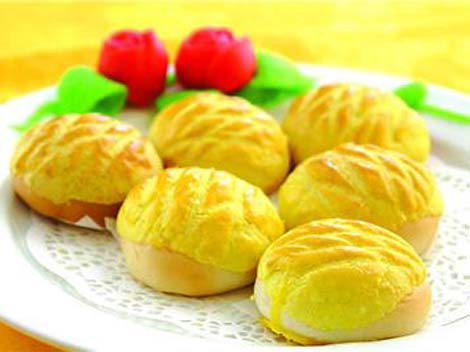
1- Pineapple Bread:
Pineapple Bread is a sweet bread originating in Hong Kong, very popular, and found in nearly every bakery.
The surface of the bread looks a pineapple, hence the name, but the traditional variety doesn't actually contain pineapple. A mixture of sugar, eggs, flour, and lard form a crisp surface with soft bread underneath, and it's best eaten when hot.
2- Roast Goose:
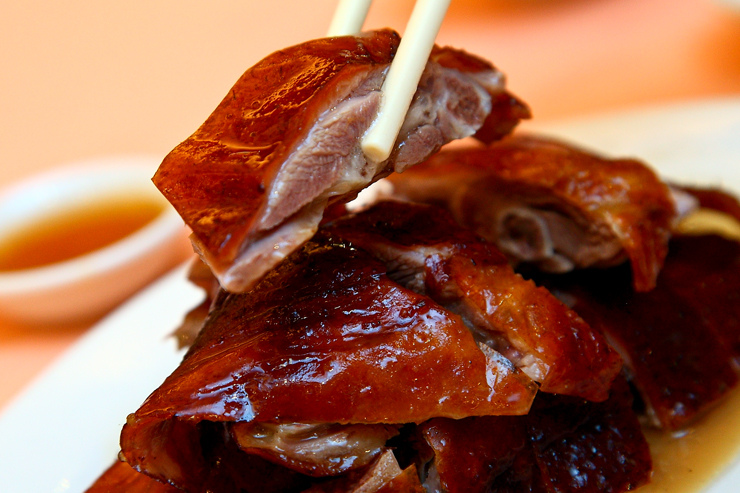 Roast Goose is a traditional specialty of Cantonese cuisine: It is a whole goose roasted with secret ingredients, cut into small pieces, each piece with skin, meat and soft bone, and eaten with plum sauce.
Roast Goose is a traditional specialty of Cantonese cuisine: It is a whole goose roasted with secret ingredients, cut into small pieces, each piece with skin, meat and soft bone, and eaten with plum sauce.
For making authentic Guangdong-style Roast Goose you need a special goose variety from that region. These geese can be raised in a short time and have a lot of meat and small bones. Eating it has become a tourist attraction in itself in the New Territories.
3- Fake Shark Fin Soup:
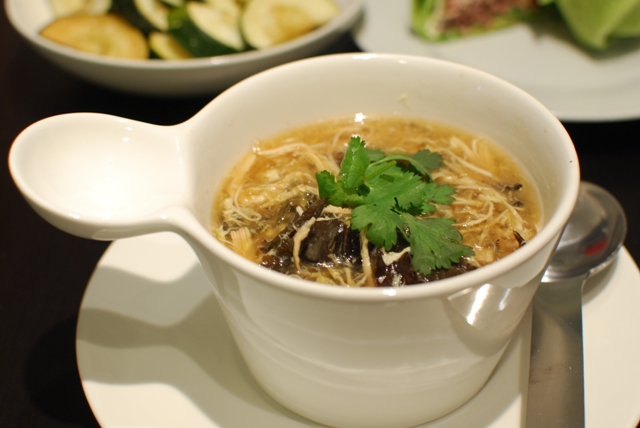 In the past, a lot of hawkers used shark meat leftovers from restaurants as principle material of this snack. Nowadays, shark fin has been replaced by vermicelli as the main ingredient of this snack, hence the ‘Fake' added in front of the name.
Mushrooms, black fungus, pork, and some other ingredients are added as the soup boils. Several seasonings are provided to accompany the meat, typically pepper, Zhejiang vinegar and sesame oil.
Fake Shark Fin Soup was widespread at Mosque Street in the 1980s. As one of the street snacks, Fake Shark Fin Soup used to be served in small bowls and sold by vendors along the streets; hence it obtained another name “Shark's Fin in Bowls".
In the past, a lot of hawkers used shark meat leftovers from restaurants as principle material of this snack. Nowadays, shark fin has been replaced by vermicelli as the main ingredient of this snack, hence the ‘Fake' added in front of the name.
Mushrooms, black fungus, pork, and some other ingredients are added as the soup boils. Several seasonings are provided to accompany the meat, typically pepper, Zhejiang vinegar and sesame oil.
Fake Shark Fin Soup was widespread at Mosque Street in the 1980s. As one of the street snacks, Fake Shark Fin Soup used to be served in small bowls and sold by vendors along the streets; hence it obtained another name “Shark's Fin in Bowls".
4- Rickshaw Noodles:
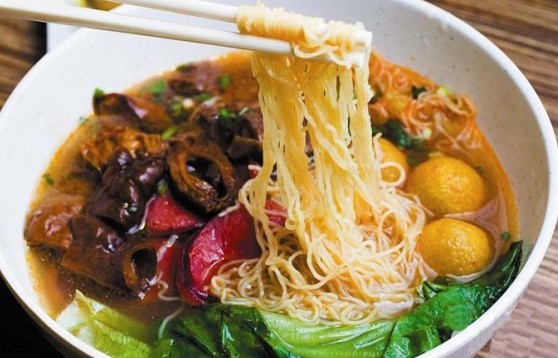
The so-called Rickshaw Noodles are a kind of fast food, really good value for money, and popular with the Hong Kong people since the 1960's.
They are instant noodles with a variety of other ingredients such as hogskin, fish balls, sirloin, and carrots, with soup and sauces. Due to the variety of ingredients, they come in many flavors and the price range is wide.
In the past, vendors always sold this food in street corners from wooden carts, which is where Rickshaw Noodles obtained its name. Even today, Rickshaw Noodles is still very popular in Hong Kong, even though selling in street corners has become a thing of the past and modern shops have taken over.
5- Sago Mix:
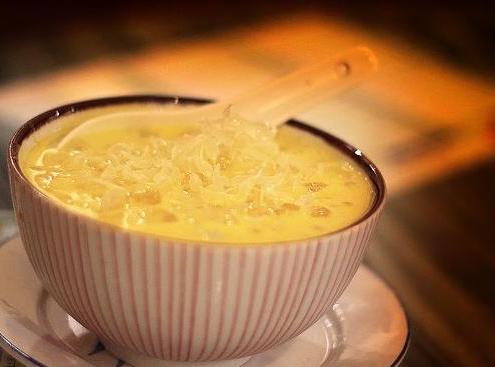 Sago Mix is a traditional dessert popular in Hong Kong. Its main ingredients are Sago (similar to tapioca) and a variety of seasonal fruits. The sweet and sour taste of fruits, combined with milky fragrance and chewiness of sago, makes Sago Mix a top choice in the summer.
Many places sell Sago Mix, but Xuliushan (a sweet shop), with a history over 40 years, is the best of all.
Sago Mix is a traditional dessert popular in Hong Kong. Its main ingredients are Sago (similar to tapioca) and a variety of seasonal fruits. The sweet and sour taste of fruits, combined with milky fragrance and chewiness of sago, makes Sago Mix a top choice in the summer.
Many places sell Sago Mix, but Xuliushan (a sweet shop), with a history over 40 years, is the best of all.
6- Fish Balls:
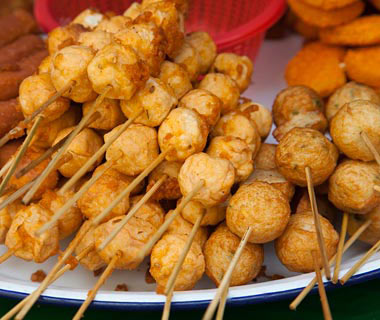 Fish balls are a typical Hong Kong snack, made of fish meat and can be divided into two varieties.
One is the well-known cooked food sold by street venders. Its history can be traced back to the 1950s. These types of Fish Balls are made of fried fish meat. Food stalls often sell them with spicy or sweet sauces.
The other kind is sold uncooked and usually served as an important ingredient of hot pot, or cooked with noodles in hot soup. The price is higher and taste different from the first type. These are available in traditional markets and super markets.
According to a statistic in 2002, the daily average consumption of fish balls in Hong Kong is 55 metric tons (about 3.75 million fish balls).
Fish balls are a typical Hong Kong snack, made of fish meat and can be divided into two varieties.
One is the well-known cooked food sold by street venders. Its history can be traced back to the 1950s. These types of Fish Balls are made of fried fish meat. Food stalls often sell them with spicy or sweet sauces.
The other kind is sold uncooked and usually served as an important ingredient of hot pot, or cooked with noodles in hot soup. The price is higher and taste different from the first type. These are available in traditional markets and super markets.
According to a statistic in 2002, the daily average consumption of fish balls in Hong Kong is 55 metric tons (about 3.75 million fish balls).
7- Hong Kong-Style Milk Tea:
 Hong Kong-style milk tea is a popular part of many Hong Kong people's daily life, typically served as part of afternoon tea.
Hong Kong-style milk tea consists of Ceylon black tea, evaporated milk and sugar, the tea at the bottom and evaporated milk on top. Hong Kongers like to say that in a cup of superior milk tea the taste of milk should be stronger than the tea. Different ingredients and cooking methods produce various flavors.
By and large, milk tea is standard fare in Hong Kong-style Western restaurants and Cha Chaan Teng, as well as Hong Kong's historic Dai Pai Dong (a Hong Kong-style outside restaurant). Nowadays, Hong Kong-style milk tea has become a symbol of Hong Kong culture. In Hong Kong films actors frequently mention it in dialogues.
Hong Kong-style milk tea is a popular part of many Hong Kong people's daily life, typically served as part of afternoon tea.
Hong Kong-style milk tea consists of Ceylon black tea, evaporated milk and sugar, the tea at the bottom and evaporated milk on top. Hong Kongers like to say that in a cup of superior milk tea the taste of milk should be stronger than the tea. Different ingredients and cooking methods produce various flavors.
By and large, milk tea is standard fare in Hong Kong-style Western restaurants and Cha Chaan Teng, as well as Hong Kong's historic Dai Pai Dong (a Hong Kong-style outside restaurant). Nowadays, Hong Kong-style milk tea has become a symbol of Hong Kong culture. In Hong Kong films actors frequently mention it in dialogues.
8- Wontons:
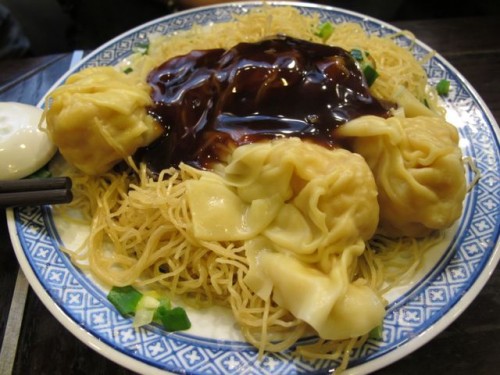 Wontons are known as chāo shǒu (literally means "crossed hands"), added to a clear soup along with other ingredients, sometimes deep-fried. Several shapes are common, depending on the region and cooking methods.
The most famous are called Sichuan-style wontons, a celebrated snack in Chengdu. They are famous for their thin skin and rich meat filling as well as their soup, made of chicken, duck, and pork simmered for a long time.
Wontons are known as chāo shǒu (literally means "crossed hands"), added to a clear soup along with other ingredients, sometimes deep-fried. Several shapes are common, depending on the region and cooking methods.
The most famous are called Sichuan-style wontons, a celebrated snack in Chengdu. They are famous for their thin skin and rich meat filling as well as their soup, made of chicken, duck, and pork simmered for a long time.
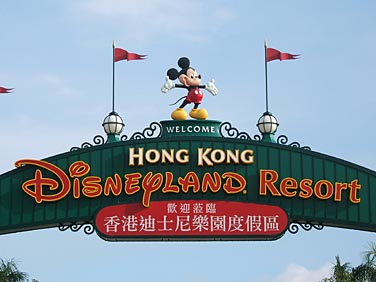
When you enter Hong Kong Disneyland, you step into a world that makes Disney characters come to life. Based on the stories of Toy Story, the American Old West, fantasy, adventure, space and Americana, Hong Kong Disneyland lets you enjoy high-quality rides, meet your favorite characters, and watch amazing Broadway-style shows.
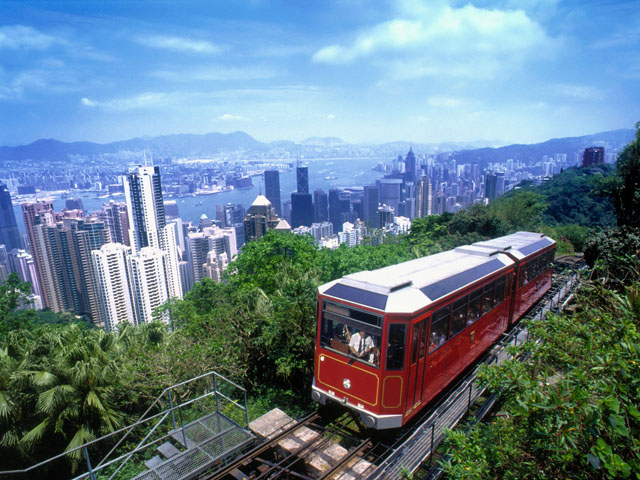
This tour introduces you to many of Hong Kong’s most iconic visual features. Its first stop is The Peak, which overlooks the city's spectacular skyline, Victoria Harbour, and the beautiful South China Sea. You’ll then step aboard a sampan ride to explore Aberdeen for a fascinating close-up gander at the local fishing community. The rustic lifestyles of these people have remained more or less untouched by modernity, which serves up a sharp contrast to the nearby luxury yachts. You’ll then move on to enjoy the scenic coastal gems of Deep Water Bay and Repulse Bay. The tour concludes at Stanley Market where you can hunt for a bargain or simply relax within the charming seaside village.
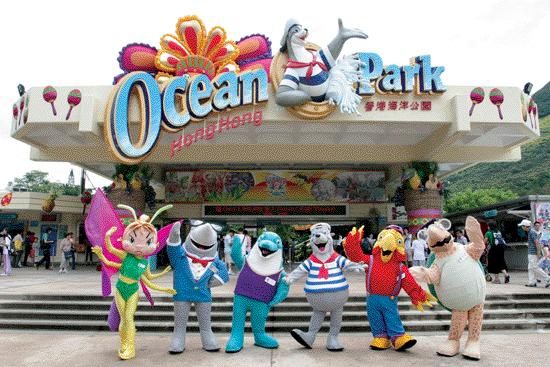
Opened in 1977, Ocean Park Hong Kong is a world class marine life theme park featuring animal exhibits, thrill rides and shows that offer guests an experience that blends entertainment with education and conservation. It is located on the southern side of Hong Kong Island, covering more than 870,000 square meters. The Waterfront and The Summit areas are connected by the Cable Car and Ocean Express funicular train.
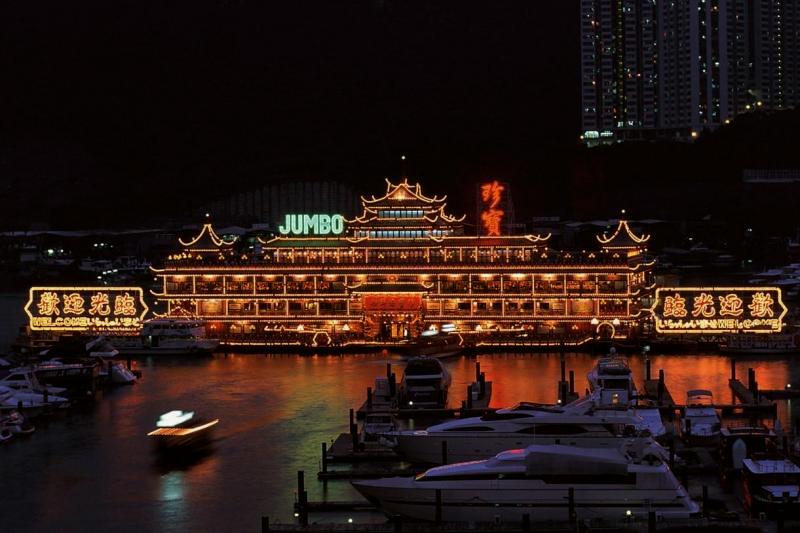
After the sun has gone to bed, catch the Peak Tram to experience Hong Kong’s best view after dark, where nothing lies before you but a galaxy of shimmering lights. You’ll then head inside Madame Tussauds Hong Kong where you can work up an appetite before moving to a delicious feast at Jumbo Floating Restaurant in Aberdeen fishing village. Afterwards, it’s on to one of Hong Kong’s most lively night spots, Central Lan Kwai Fong, before wrapping up the evening of fun with a closer view of the city’s most recognised landmark – Victoria Harbour.

There’s something therapeutic about gazing upon Hong Kong's endangered ‘pink’ dolphins as they frolic in their scenic, natural habitat. The Sha Chau and Lung Kwu Chau Marine Park in the city’s western waters has rich fisheries to provide abundant food for these Indo-Pacific humpback dolphins. The boat cruise also passes the scenic western shoreline of the New Territories and Hong Kong International Airport in an area frequented by fishing boats. And, best of all, if you don't see a dolphin on the tour, you can simply join again for free on any other scheduled trip.
The hotel offers a snack bar/deli. A bar/lounge is on site where guests can unwind with a drink. Guests can enjoy a complimentary breakfast. An Internet point is located on site and high-speed wireless Internet access is complimentary.